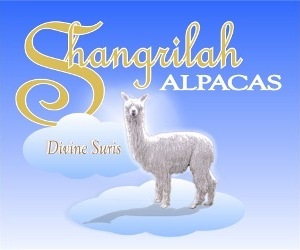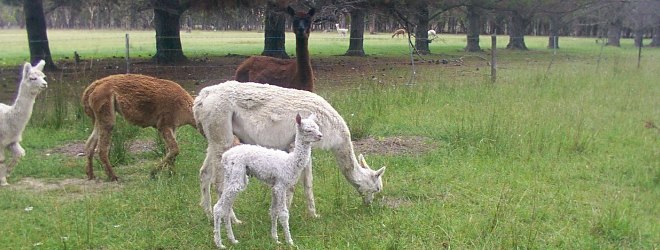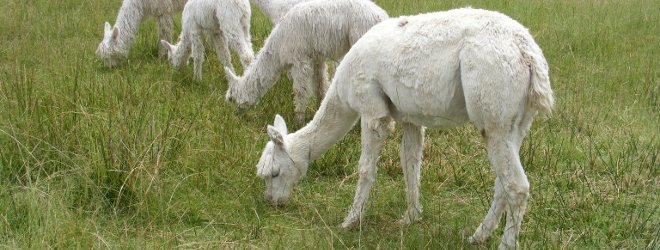Dispelling Myths About Suri
We were inspired to write this article after continued questioning from very new or potential alpaca breeders about things they had been told about suri alpacas, sadly at times by a few huacaya alpaca breeders seemingly attempting to persuade people against suri. Some common themes have emerged over the years in the type of myths being perpetuated, so in this article we provide the facts about suri, in the hope it may assist anyone visiting our site who has also heard or been led to believe the same misconceptions.
Our facts are based on 8 years experience gained through daily observation and management on our farm of suri alpacas, countless discussions with other suri breeders (some of whom also own huacaya alpacas) and extensive reading and research of works by respected and published authorities on suri alpacas and alpacas generally. Although we specialise in suri, we also have a smaller number of huacaya alpacas, so our experience is with both breeds, placing us in a position to be able to compare both breeds first hand.
Myth #1 - SURIS ARE NOT SUITED TO COLD CLIMATE AREAS IN AUSTRALIA.
Given our property is on the Northern Tablelands of NSW, we are well situated to comment on suri resilience to colder areas of Australia. Our suris fly through frosty nights unperturbed by temperatures that can fall as low as -7 to -4, for the best part of several weeks at a time. We have recorded temps as low as -12. Our suris do not show any difference to our huacaya alpacas in how they cope with these kinds of temperatures, which is extremely well, indeed we believe it increases fleece quality.
After all, alpacas of both types are native to the Andes in South America, an area with much more consistently severe cold and higher altitude than anywhere found in Australia. Although there is some thought that suris may have originated on the lower lands of the Andes, these areas would still be comparably colder overall than any conditions experienced in Australia.
Whilst suri alpacas do just as well as huacaya in coping with the cold, they are however more vulnerable to the sometimes deadly combination of cold, wet and wind. This is due to suri fleece falling from the midline of the back, this leaves a line along the suri alpacas spine that is open to the elements, particularly so when wet, and allows body heat to escape. However, all alpacas should have access to shelter in these types of conditions, even in the summer months, especially when temperatures suddenly plummet with thunderstorms. Our huacaya alpacas just as readily retreat to their shelter houses as our suris do in these conditions.
Converse to the above, we have observed on our own farm, that suris cope with our summer heat slightly better than our huacayas do, we base this on the fact that our huacayas will spend more time sitting under shade and are more likely to have a "swim" on very hot spring or summer days, whereas the suris continue with their days pretty much the same as always.
Myth #2 - SURI ALPACAS ARE HARDER TO MANAGE AND MORE FLIGHTY IN NATURE THAN HUACAYA ALPACAS.
We have found absolutely no difference between the flightiness of our suris and huacayas, nor any difference in ease of management. Our experience has been that it comes down to individual personality rather than breed, the individual alpacas experience (good or bad) with humans and frequency of being handled by humans; and their dams influence on how they generally react to humans, i.e. if the dam tends to be friendly, cautious, timid etc with humans.
Some alpacas have "out there" personalities, others are timid, some can be stroppy when handled and struggle to escape, others can stand beautifully; some are more easily stressed and others would seemingly not be deterred if a bomb went off next to them; just like with people, alpacas have an array of personality traits that are influenced by a variety of factors, but not by if they are huacaya or suri.
A contributing factor to this myth about suri is that they are most usually shown in full fleece of up to 24 months growth, this means for many show suris their fringe locks hang down over their eyes, which can hinder their sight, making them more cautious and tentative of their surroundings, hence some suris will appear more flighty simply because they cannot see as well!! These same animals will more often than not, not display the same behaviours with their fringe trimmed.
One suri breeder we know puts their animals longer fringes up into a ponytail while at home grazing so that their sight is not hindered, allowing the fringe to fall out naturally when attending shows. A simple and seemingly effective idea we plan to trial ourselves.
Myth #3 SURI FLEECE CANNOT BE PROCESSED
Whilst it is true that suri fleece can be more difficult to process, both commercially and by the home spinner, it most definitely can be processed. Much work is still required to further develop this aspect of the industry, but great in roads are being made. Some Australian suri breeders have taken various initiatives to further progress suri fleece processing and others have thriving businesses in the production of exquisite suri garments and homewares from their own and others suri fleeces.
Additionally, there are a number of outlets that take suri fleece and process it into yarn and fabric.
Suri fleece is highly sought after in the European fashion market and is greatly valued for its silkiness and lustre, which stays lustrous after processing.
Myth # 4 SURI ALPACAS ARE SMALLER THAN HUACAYAS
This is another myth we have found to be totally unfounded. Some of our suris are larger framed than our huacayas and our huacayas are by no means midgets. In fact there are some suri breeders who believe suri are generally larger framed.
Essentially, a range of frames and sizes can be found in both breeds and this variability depends on genetic background and environmental influences such as quality of nutrition and health issues such as worms during the alpacas growth years.
The way a huacayas fleece grows (like a sheeps) can give the appearance they are bigger than they actually are as their fleece gives them a more rounded appearance, kind of creating a halo affect around their bodies. This is not s true indication of their overall size and frame though.
Of interest is anecdotal evidence made by our shearer who shears alpacas both in the higher rainfall areas of the NSW north and mid north coasts as well as the Tablelands, he consistently reports that both suri and huacaya on the Tablelands grow bigger than their coastal cousins, we think this is possibly due to the lusher grass of the coastal areas having less nutritional value at times due to heavier rainfall, in other words the grass is more likely to be full of water rather than good nutritional content.
Some researchers have suggested that fleece type is not the only difference between huacaya and suri alpacas. It has certainly been our experience that good quality pure suri animals and indeed some of our best quality crosses have larger ears than huacayas, but this is the only consistent size difference we have seen between both breeds.
Myth # 5 SURI ALPACAS ARE ALWAYS MORE EXPENSIVE TO BUY
This may have been the case in the early years of suri in Australia, due to suri being much rarer, however it is not the case any longer even though they remain much smaller in numbers. High prices can still be paid for elite suris but those prices are comparable to those of elite huacayas.
Many suri breeders have considerably dropped their sale prices in recent years and if one does their research on what's available and the quality of the animals there are some very good bargains to be had.
Most suri breeders now sell their cross bred animals at very reasonable prices, and pure suri can also be found at a reasonable price for good quality animals.
We watch the market continually and cannot see any difference at all these days between average suri and huacaya prices. Variability is influenced by animal quality and individual stud owners, rather than breed type.
Myth #6 SURI WETHERS ARE NOT AS GOOD AT BEING HERD GUARDIANS
We commenced our foray into alpacas with no intentions of becoming breeders (but like many before us became addicted to them) and purchased 2 alpacas to work as guardians for our then black faced Suffolk sheep herd. This initial purchase was of one suri wether and one huacaya wether. We found both to be as equally effective in protecting our lambs. Our experience has been corroborated by many other owners who have both suri and huacaya as guardians.
We have sold a good number of suri wethers as guardians now and consistently receive positive feedback on how well they do their job.
We hope this article helps to dispel some of the myths about suri for anyone considering their options and we are only too happy to answer any queries about suri or alpacas generally.
© Shangrilah Alpacas 2012


